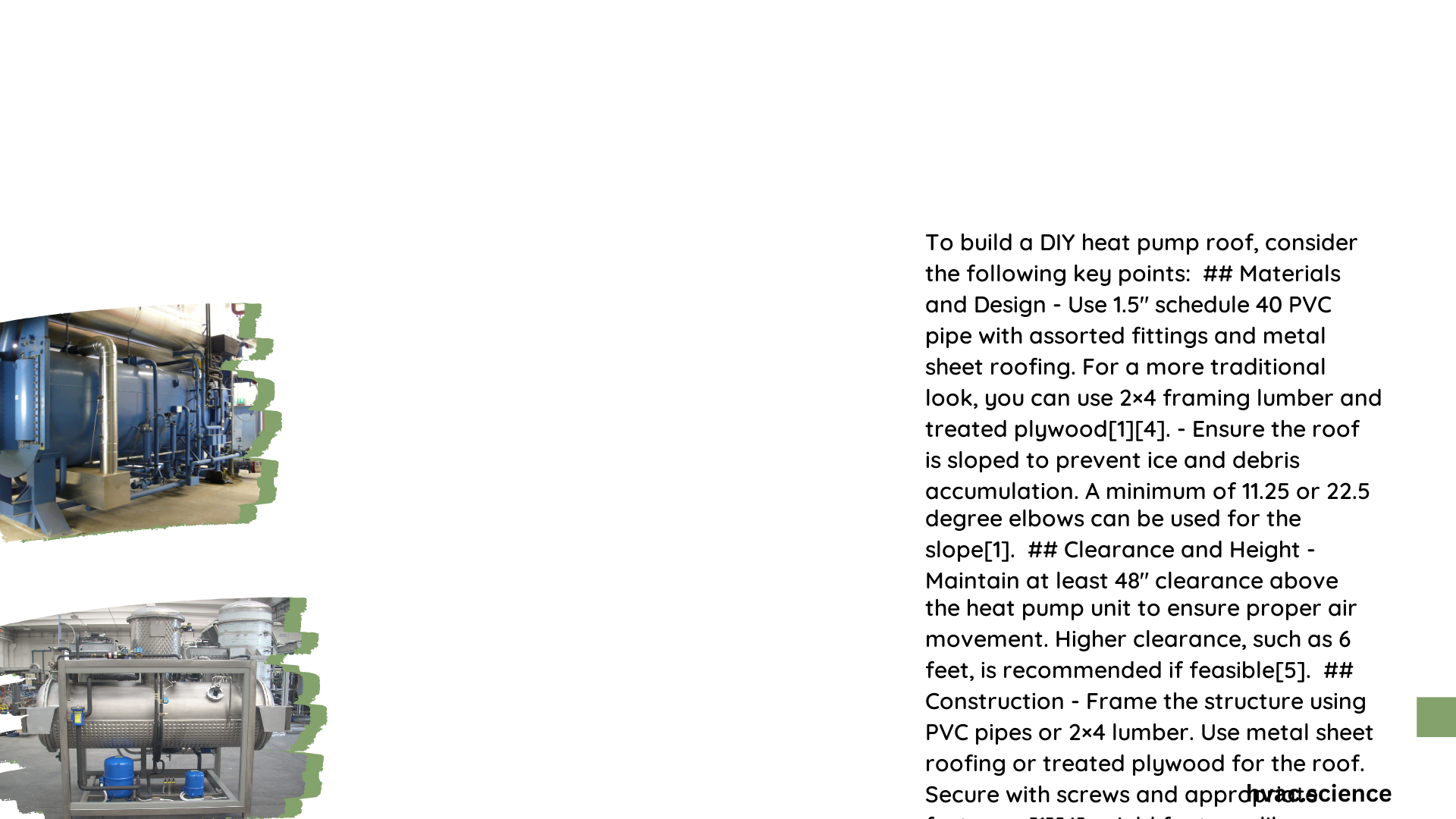A DIY heat pump roof installation can significantly reduce energy costs and improve home comfort. This guide covers the step-by-step process of installing a heat pump on your roof, including preparation, safety measures, and best practices. We’ll explore the most effective insulation materials, energy-efficient designs, and cost-saving strategies to help you successfully complete your DIY heat pump roof project.
What Are the Key Steps for DIY Heat Pump Roof Installation?
Installing a heat pump on your roof involves several crucial steps:
- Preparation and safety measures
- Indoor unit installation
- Drilling the lineset hole
- Routing refrigerant lines and drain
- Mounting the outdoor condenser unit
- Electrical connections
Let’s break down each step in detail:
1. Preparation and Safety
Before beginning your DIY heat pump roof installation, ensure:
- All electrical power to the work area is turned off
- You have the necessary protective gear (gloves, safety goggles)
- You’ve gathered all required tools and materials
2. Indoor Unit Installation
To install the indoor unit:
- Choose a practical location with no obstructions
- Use a level to mark the mounting bracket position
- Drill holes and secure the bracket with 2\” cabinet screws
3. Drilling the Lineset Hole
For the lineset hole:
- Use a 3.5\” hole saw to drill through the wall at a slight downward angle
- Cut through interior wall, insulation, and exterior sheathing
- For exterior finishes like fiber cement siding, finish cutting from outside
4. Routing Refrigerant Lines and Drain
When routing the lines:
- Carefully feed refrigerant lines and drain line through the hole
- Ensure the drain line is at the bottom for proper drainage
- Avoid kinking the lines as you uncoil and feed them
5. Mounting the Outdoor Condenser Unit
To mount the outdoor unit:
- Place on a level surface (concrete pad or hard plastic condenser pad)
- Use rubber pads under the feet for stability
- Secure with Tapcon concrete screws or similar
- Ensure proper clearance around the unit
6. Electrical Connections
For electrical connections:
- Connect a 40 amp / 240 volt circuit to the outdoor unit
- Connect a 20 amp / 240 volt circuit to the main unit
- Run six-conductor thermostat wire between indoor and outdoor units
What Tools Are Needed for DIY Heat Pump Roof Installation?

To successfully complete your DIY heat pump roof project, you’ll need:
- Drill
- Hacksaw
- Wrenches
- 3.5\” Hole Saw
- Level
- Screwdriver set
- Hammer
- Pliers
- Refrigerant manifold gauge and vacuum pump (if handling refrigerant)
- Electrical supplies (wire strippers, multimeter)
What Are the Best Insulation Materials for Heat Pump Roofs?
Choosing the right insulation is crucial for heat pump efficiency. Here’s a comparison of popular options:
| Material | R-Value | Cost per sq ft | Installation Method |
|---|---|---|---|
| Fiberglass Batt | R-11 to R-38 | $0.50 – $1.50 | Fit between joists |
| Cellulose | R-10 to R-38 | $0.50 – $1.50 | Blown-in |
| Spray Foam | R-6 to R-7 per inch | $1.00 – $3.00 | Sprayed directly |
Each material has its advantages:
- Fiberglass batts are easy to install but must fit snugly without compression
- Cellulose offers excellent coverage but requires specialized equipment
- Spray foam provides a tight seal but is more expensive
How Can You Design an Energy-Efficient Heat Pump Roof?
To maximize energy efficiency in your DIY heat pump roof:
- Ensure proper indoor unit placement:
- Mount at least 6 inches from the ceiling
-
Allow clearance on all sides for optimal airflow
-
Consider airflow distribution:
- For ductless systems, place indoor units strategically
-
Use multiple units for larger spaces if necessary
-
Pay attention to thermal performance metrics:
- Look for high SEER (Seasonal Energy Efficiency Ratio) ratings
- Check HSPF (Heating Seasonal Performance Factor) for heating efficiency
What Are Cost-Effective Solutions for DIY Heat Pump Roofs?
To keep your DIY heat pump roof project budget-friendly:
- Choose an appropriate unit size:
-
MRCOOL DIY 12K BTU Ductless Mini-Split Heat Pump: $800-$1,200
-
Factor in additional costs:
-
Installation tools and materials: $200-$500
-
Consider long-term savings:
- Energy bill reductions of 20% to 50% are possible
- Savings depend on old system efficiency and local energy costs
How Much Material Is Needed for a DIY Heat Pump Roof?
For your DIY heat pump roof project, you’ll need:
- Line Set Cover
- Condenser Mounting Bracket (optional)
- Condenser Pad (optional)
- 2\” Cabinet Screws
- 2-1/4\” Concrete Screws
- Insulation materials (based on chosen type and R-value)
Exact quantities will depend on your specific roof size and heat pump model.
By following this comprehensive guide, you can successfully install a DIY heat pump roof system, improving your home’s energy efficiency and comfort while potentially saving on energy costs.
